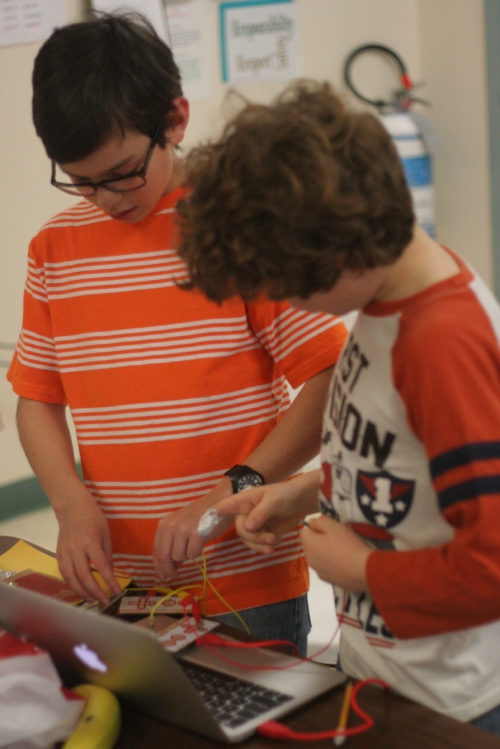WMSI Mobile has been busy this month - we visited 8 different schools in the North Country!
Each route color represents a school we've visited once or multiple times in the past month.
While adding many miles to our new van, we've been getting students excited about some seriously cool new STEM skills, including sensor programming, game controller design, and Minecraft coding on one of the world's smallest and cheapest computers!
During these hectic weeks of engineering and fun, we've been asking ourselves "what are the fundamental components to a good STEM session?" Here's the first idea we came up with.
Every set of hands needs something to do. One of the many reasons students loved game controller design was that there was something for each partner. For example, a set of Milan explorers had the unique idea of developing a classic joystick controller. One partner built the box for it while the other partner built the handle. They worked furiously to get it done on time. You could hear fast paced discussions of measurements and placement of aluminum foil as they cut, taped and thought their creation together.
One student (left) working on the handle of the joystick, while his partner works on the box to contain it.
Another pair designed a controller for a three person game. Each player had an aluminum foil "thimble" around their index finger which, when placed on a conductive pad, made Donkey Kong do something in-game. One player controlled jumping while the other two controlled backwards and forwards. Let me tell you, the team work required for coordinating barrel jumps and avoiding bad guys is pretty amazing!
All of these ideas easily incorporate two sets of hands in each partnership, whether the jobs be cutting cardboard, coding, taping, or the act of playing the game itself!
Not all of our activities followed this principle of "every set of hands needs something to do". Some of our activities needed a little polishing before they became rockstar STEM sessions. Our third session, musical robots, involved coding EV3s so that different colors placed under a sensor would trigger the EV3 to make different sounds. This activity had a lot of promise but was missing some crucial WMSIcal and STEM design touches. Namely, it was all coding, which meant that only one set of hands was busy in each pair. Many partners contributed ideas, and there was always a keyboard switch every few minutes, but the sharing of the keyboard led to some less than interested STEM Explorers at times.
Creating WMSI activities, like any creative task, follows the design process. We identified a problem -- all hands need something meaningful to do -- and tried several different ideas to fix it. The final concept was pretty awesome. "Musical Robots" became "Sound Bots" and the challenge changed from "design a musical instrument" to "design a motion sensor that does something cool and/or useful." Both involve coding computers to create an output given a certain sensory input, but sound bots is far more engaging. Sound bots invite team members to design and build structures, mechanisms, and code. This gives all hands something meaningful to do!
Students suddenly had so many things to do! The room buzzed with activities as pairs coded their sensors, recorded sounds that would be activated by motion, and designed cardboard cutouts that incorporated their sensor!
One pair programmed and designed a panda that told you its name and favorite pastimes if you got close enough to the sensor.
This group designed a girl robot that greeted you if triggered.
We even had some door triggered sensors that welcomed you to Groveton every time you walked through a doorway and a birthday cake that sang "happy birthday" every time your head came up close to blow out the candles!
Indeed, STEM learning tools are powerful partly because it is highly engaging, both physically and mentally. We've learned that activities which include a variety of tasks (coding, crafting, wiring, etc.) work best for our STEM Explorers. Using these learning experiences, we will continue to hone our STEM adventures throughout the year!
Next up, we'll use Minecraft to teach coding, engineering, and problem solving!











































